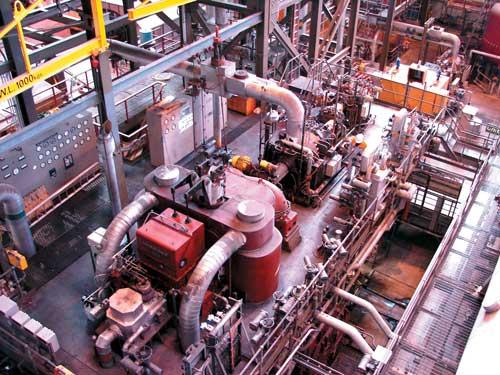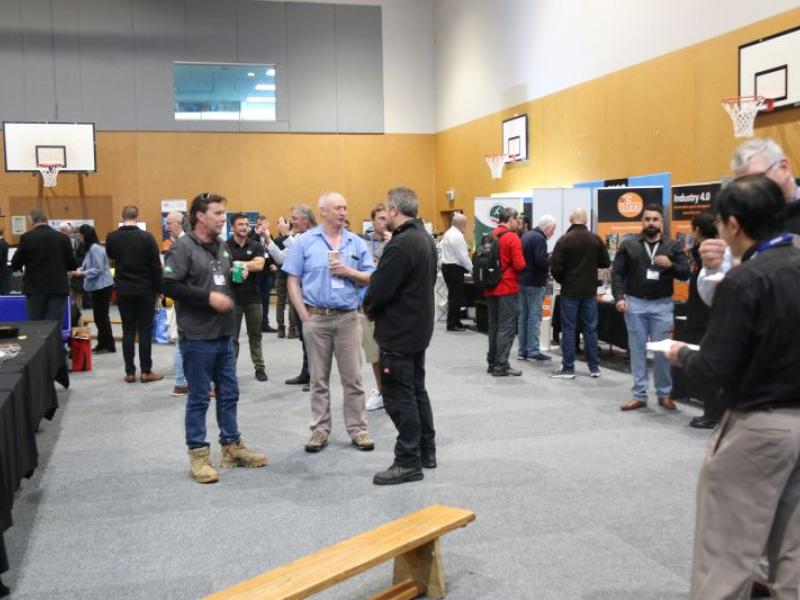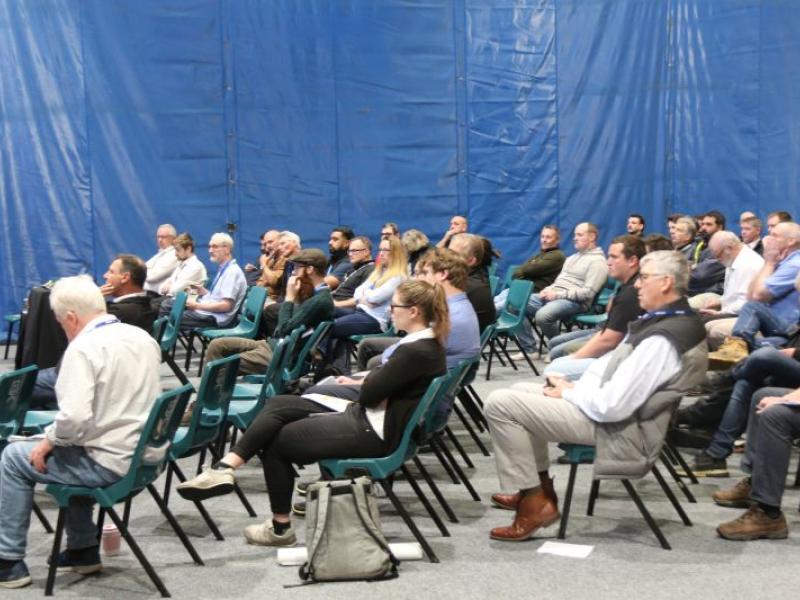There is a distinct difference between condition monitoring and vibration analysis. The former is aimed at detecting a change in the monitored machine whereas the latter seeks to determine what has changed and the severity of that change. For the analyst there is a fine line between ‘too soon’ and ‘too late’. Too soon and the damage will be hard to see, too late and the machine will take itself out. In either case you will be remembered for the wrong reasons.
Each component in a rotating machine generates vibration energy at characteristic frequencies; the frequency is governed by the speed of the machine and the geometry of the component. Imbalance for example will generate vibration at the rotation frequency of the shaft. A gearbox will generate vibration at a frequency equal to the number of teeth on the gear times the rotation speed of the gear (gear mesh frequency). Vibration analysis measures the vibration, typically at the bearings, and this vibration is a combination of all the vibration frequencies and amplitudes in that machine whose amplitude or level have been attenuated by the distance and interfaces between the measurement point and the source. To give an example: A gear mesh vibration must travel along the shaft and through the bearing before it is measured. This amplitude and frequency pattern is referred to as the vibration signature of that machine.
Developing faults change vibration signature
A machine in good condition will show a vibration signature which remains relatively constant in both frequency content and amplitudes, a machine which is developing a fault will have a signature which is changing in both frequency and/or amplitudes. There are three measurable vibration parameters, namely displacement measured in µm, velocity measured in mm/s and acceleration measured in Gs or m/s2. These three are related by the frequency so that at low frequency displacement is high for a given velocity and acceleration is low. Conversely at high frequency displacement is low and acceleration is high for the same velocity.
One of the most common methods of detecting vibration change is to trend the total vibration of the machine. By having the appropriate alarms set up, a change in the trended vibration will trigger an alarm which in turn prompts vibration analysis to determine why the vibration has changed. Relying on vibration trending has two common traps for the unwary; the appropriate parameters must be trended and the position and attachment of the sensor must be exactly the same each time. If the wrong parameter is trended there is a high risk of missing a developing fault particularly in the early stages and therefore reduce the lead time to failure. If the measurement is not done the same way each time the values will differ and make the trend less sensitive to changes.
Larger rotating plant usually has vibration monitoring equipment permanently installed (online monitoring), set up with alarms to warn of significant changes and at higher levels to trip the equipment. One very powerful tool is to combine online monitoring with online analysis. The monitoring function warns of change and protects the machine while analysis allows the machine to be run even with a developing fault as the nature and severity of the fault is known. The online system allows this to be done continuously thus safely allowing the machine to be run so it can be repaired at a time when downtime has a lower cost.
Case study: Huntly Power Station
The Huntly Power Station has four 250MW turbo-alternators. Associated with each of these units is a steam turbine driven boiler feed pump. Both the turbo-alternator and the feed pump are protected with a sophisticated monitoring system which provides continuous machine health information. The vibration level on one of these feed pumps began to rise over a period of time and eventually reached the alarm level. Detailed analysis of the vibration and its change with time and pump load meant that the cause of the deterioration was known. System load requirements meant that it was desirable to keep the unit in service if safe to do so.
By trending the vibration and the position of the shaft within the bearing of the boiler feed pump it was possible to keep the unit running at full capacity until a more convenient outage could be arranged. Removal of the feed pump immediately reduces the unit load capacity by 100MW. Although the bearing had been severely damaged there was no damage to the shaft journal. This case study constitutes a good example of just in time maintenance guided by vibration analysis.
There is an axiom which says “if you keep doing the same thing you will keep getting the same results”. In our case that means: If you have premature bearing failures and all you do is replace the bearing you will continue to have bearing failures. You will, however, look quite good as you will become very good at predicting the bearing failures, and many condition monitoring and vibration analysis programs are in this position. The ultimate goal should be to move to the next level; proactive maintenance, where the root cause of the failures is investigated and fixed so the failures no longer occur.
There is a worldwide skills shortage that also affects the area of vibration analysis. Many companies have large assets which require monitoring and analysis at a number of locations, a task which presents a difficulty. Don Bently, founder of Bently Nevada used to preach that we should move data not people. Technology today has made this a very practical reality. With broadband internet it is possible to log into the monitoring system on a machine to carry out detailed vibration analysis and, if required, change alarm settings, from anywhere in the world with the same speed as being at the machine. The problem with vibration protection systems is that they will protect the machine by taking it out of service but without the analysis the cause of the high vibration level is unknown.
Genesis Energy has large generation assets spread around the country from Huntly in the North Island to Tekapo in the South Island and has only two vibration analysts who are both based at Huntly. Genesis makes wide use of remote vibration analysis using secure internet access or virtual private networks (VPNs). This technology allows vibration analysis to be done on any asset at anytime from anywhere and over the years this has paid huge dividends in reducing unnecessary machine down time.
Article by Simon Hurricks, machine dynamics engineer for Genesis Energy. Simon has been employed by Genesis and its predecessors for 41 years and has been specialising in vibration analysis and balancing for 36 years. He is based at Huntly since 1980.
For more informaton: Simon.Hurricks@genesisenergy.co.nz






